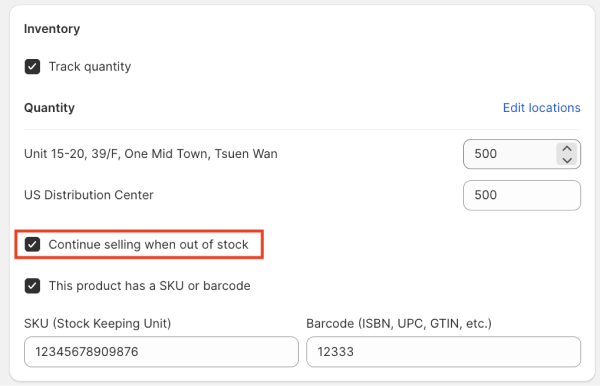Why Social Commerce is the Future of Online Retail
Updated: March 01, 2024
·
10 mins read
Table of contents
The Rise of Social Commerce
The Benefits of Social Commerce for eCommerce Businesses
Faster, frictionless sales cycle
Intelligent inventory choices
Steady audience growth
Authentic customer engagement
9 Things to Consider When Implementing Social Commerce
1. Choose the right platform(s)
2. Know your audience
3. Streamline the purchase process
4. Create high-quality, shareable content
5. Engage with your audience
6. Leverage influencer partnerships
7. Use analytics
8. Provide a seamless checkout experience
9. Experiment and learn
Finding the Right Tools for Social Commerce Success
The Future is Now for Social Commerce
Back to top
The future of online retail blends social media and eCommerce, giving rise to a whole new shopping experience called social commerce. This approach transforms how consumers engage with brands, unveiling new opportunities for growth.
Social commerce revenue in the US alone is expected to surpass $30 billion in the next two years, reaching an astounding $80 billion by 2025. That's a significant increase that no business can afford to overlook.
This rapid rise of social commerce signals a shift in consumer behavior, an exciting opportunity for brands to engage with customers in a more personal and interactive way. In this article, we'll delve into the growth of social commerce and its impact on eCommerce, and provide practical steps to incorporate social commerce into your business.
The Rise of Social Commerce
The formula for eCommerce was once solely focused on driving traffic to your website and then having people convert there. It’s straightforward, and it works—but it can create some clunkiness for the customer journey.
While this still remains a core part of most merchant strategies, online shopping behaviors have changed, driven by the desire for more seamless, interactive, and personalized shopping experiences.
More and more consumers are opting for more personal interaction with brands, evidenced by the fact that the market size of social commerce is projected to reach trillions of dollars. It's not just a fleeting trend; it's becoming an integral part of a brand's revenue stream, shaping the way businesses interact with their customers.
Many iconic brands have already hopped onto the social commerce bandwagon, reaping significant rewards.
Take Clinique, for instance. One of the first to experiment with live shopping on Instagram, they launched an event to capitalize on the popularity of their sold-out Black Honey lipstick in 2021. They launched an event to capitalize on the popularity of their sold-out Black Honey lipstick in 2021.
Demand for Clinique's Black Honey Almost Lipstick surged in the summer of 2021 due to beauty and social trends. To leverage Black Honey's viral moment, Clinique partnered with Instagram to launch an exclusive 7-piece kit, featuring the in-stock travel-size Black Honey lipstick.
The result? A whopping 85% of the product set orders via Instagram and Facebook from September 14th to 25th 2021, plus a 7x faster product launch activation (of three days compared to an average of three weeks).
The Benefits of Social Commerce for eCommerce Businesses
Kick-starting a new channel takes a lot of work, but the benefits of incorporating social commerce into your strategy far outweigh any drawbacks.
Some of these benefits include:
Faster, frictionless sales cycle
By enabling users to complete their purchases directly on the platform, social commerce reduces potential confusion, cart abandonment, or the need for comparative research.
Let's say a customer sees an influencer promoting a product on Instagram. With the click of a button, they can purchase the product without leaving the app or searching for it elsewhere. This seamless shopping experience leads to faster and more frictionless sales cycles, increasing conversion rates and overall revenue.
Intelligent inventory choices
Social commerce can provide valuable insights into consumer behavior and preferences, empowering businesses to make more informed decisions about their inventory or marketing.
If you notice a spike in purchases of a specific product through a shoppable live stream, it indicates that the product resonates with your audience. This information can guide future inventory choices and marketing strategies. Put simply, stock up on what sells on your social commerce platform of choice and eliminate what doesn't.
Steady audience growth
As customer acquisition costs continue to rise, social commerce offers a cost-effective solution to reach new customers, making products accessible on the platforms where people spend the most time.
Take a look at your current audiences on social media and consider how many more potential customers you could reach by integrating shopping capabilities into your posts. Most brands have already established an online audience, and adding this component of selling directly on the native platform can help you capitalize on audiences ripe for conversion.
Since 2017, social referral to retail eCommerce sites has surged 110%, outperforming all other referral methods. It's prompting audiences to engage more by commenting, liking, and sharing these sites with a broader audience.
Authentic customer engagement
Social commerce encourages two-way communication, allowing customers to engage with businesses and use social media as an efficient customer service channel.
Consider the shopping experience of a website compared to a social media platform. On a website, customers may feel like they are simply purchasing a product. But with social commerce, they actively engage with the brand and build relationships on social media.
9 Things to Consider When Implementing Social Commerce
Let's get rid of that overwhelming feeling and jump right into the steps for smoothly incorporating social commerce into your business strategy.
1. Choose the right platform(s)
Identify the social platforms where your target customer is most active. Think about the type of content you plan to share and choose platforms that align with your brand voice and aesthetics.
A platform like TikTok may not be the first that comes to mind for eCommerce businesses, but with its increasing popularity and shoppable features, it's worth considering. Alternatively, platforms like Instagram and Pinterest may be a better fit if your brand focuses on visual content.
2. Know your audience
Understand your audience's preferences, behaviors, and needs. If you've analyzed your customer data and noticed that your customers are more likely to purchase on their mobile devices, consider using social commerce features optimized for mobile shopping. If they are a younger demographic, you may want to focus on platforms like Snapchat or TikTok.
3. Streamline the purchase process
Make the buying process as simple and quick as possible. Reducing the number of steps to purchase can significantly increase conversions and customer willingness to buy. Take advantage of the native shopping features on social media platforms, such as Instagram Checkout and TikTok Shop, to streamline the process. Use what already exists to your advantage.
4. Create high-quality, shareable content
Engaging, informative, and shareable content can attract potential customers and encourage purchases. It's important to note that this content should differ from what you post on your website or other marketing channels. Social media platforms call for a more casual and interactive approach, so take the opportunity to showcase your brand's personality. It's not a place to repurpose your website's product descriptions.
5. Engage with your audience
Foster two-way communication with your audience. Respond to comments, answer queries, and engage in discussions to build relationships and trust.
Remember that social commerce is supposed to be exactly that: social. It's a noticeable departure from traditional eCommerce's passive, one-way communication. Embrace the opportunity to connect with your audience on a deeper level.
6. Leverage influencer partnerships
Collaborate with influencers who resonate with your brand and audience. For example, if your brand targets fitness enthusiasts, collaborating with a well-known fitness influencer can bring exposure and credibility to your products. Influencers have established relationships with their followers and can help spread the word about your brand and its offerings. Be cautious when choosing influencers and ensure they align with your brand values.
7. Use analytics
Regularly review and analyze your social commerce performance with key metrics such as conversion, engagement, and click-through rates. Use this data to make informed decisions and continuously improve your social commerce strategy.
For instance, if you notice a particular product is not receiving many clicks or conversions, you may need to adjust the content or targeting for that product. Maybe your audience prefers a different content or channel for that product. Analytics can provide valuable insights and help guide your decision-making process.
8. Provide a seamless checkout experience
Ensure that the checkout process on your social media platform is seamless and user-friendly. Most platforms will have their own checkout process built into the platform, but one thing you can do to create a smooth experience is to limit the steps and barriers to purchase. Consider offering multiple payment options and a guest checkout option for those who do not have an account on the platform.
9. Experiment and learn
Test different strategies, learn from the results, and continuously optimize your social commerce approach based on these learnings. You might find that certain types of content or promotions perform better on different social media platforms. Sometimes, a campaign could fall flat, and sometimes, it could wildly exceed expectations, but all of these learnings are valuable. Use your findings to make data-driven decisions for future campaigns.
Finding the Right Tools for Social Commerce Success
Coupling your preferred social commerce platform with the right tools can significantly enhance your results and streamline your processes. Let's look at TikTok Shop, specifically, and how you can enhance that experience.
TikTok Shop has paved a new way for brands to authentically connect with creators and communities to grow their business and drive meaningful shopping moments.
Using TikTok Shop, you can:
- Showcase your products in a visually appealing storefront on TikTok.
- Collaborate with creators to promote your products and leverage their engaged audience.
- Enable live shopping, shoppable videos, and product showcases to help your audience discover and purchase products in a seamless experience.
- Take advantage of TikTok's powerful algorithm to reach new potential customers through personalized product recommendations based on behavior and interactions.
- Gain valuable insights into your target audience, including their interests and shopping behavior, through TikTok's analytics tools.
But one area that has the potential to get messy is inventory management. It's easy to lose track of your product inventory when you have various sales channels, including social media platforms like TikTok Shop.
That's where a feed management tool like AfterShip Feed can come in handy. It can help you sync your inventory with TikTok Shop, and automatically update product availability. This way, you can prevent overselling and ensure a seamless shopping experience for your customers.
The Future is Now for Social Commerce
Whether you're ready for it or not, social commerce is here to stay and will only continue to grow. As more and more users turn to social media for shopping inspiration and convenience, brands must adapt and incorporate a strong social commerce strategy into their overall approach.
Always remember, there’s no one-size-fits-all here. Keep experimenting, learning, and adapting to stay ahead in this ever-evolving landscape. With the right tools, strategy, and customer-centric approach, you can unlock the full potential of social commerce and create a seamless shopping experience for your audience.
And if you're experimenting with TikTok Shop, jump on a free trial of AfterShip Feed to see how it can help you streamline your inventory management and boost sales.
Updated: March 01, 2024
Share this article
Get the week's best eCommerce content
10X faster TikTok Shop product listing with AI
Recommended from AfterShip
December 09, 2025
November 05, 2025
October 16, 2025
October 11, 2025




